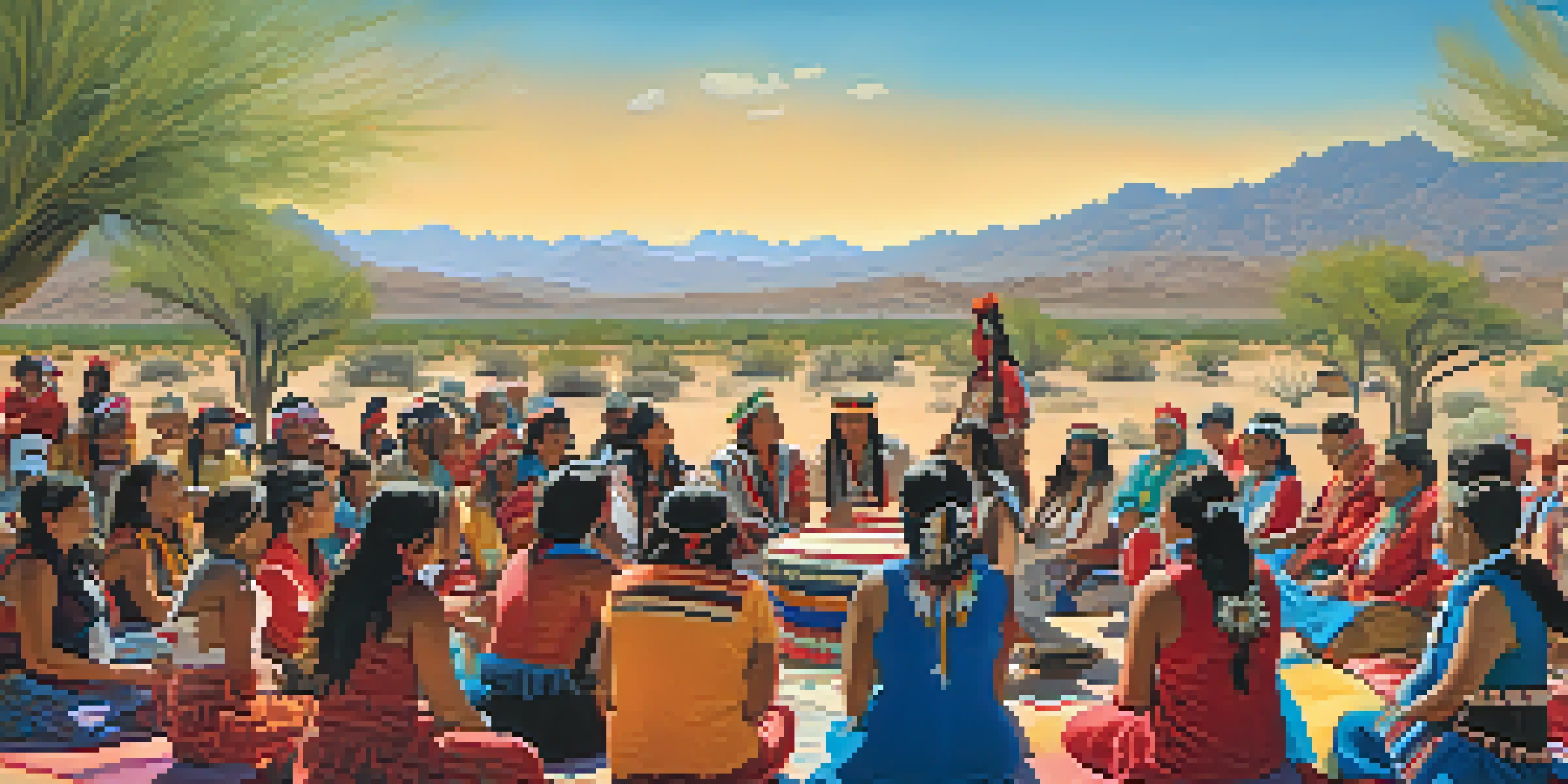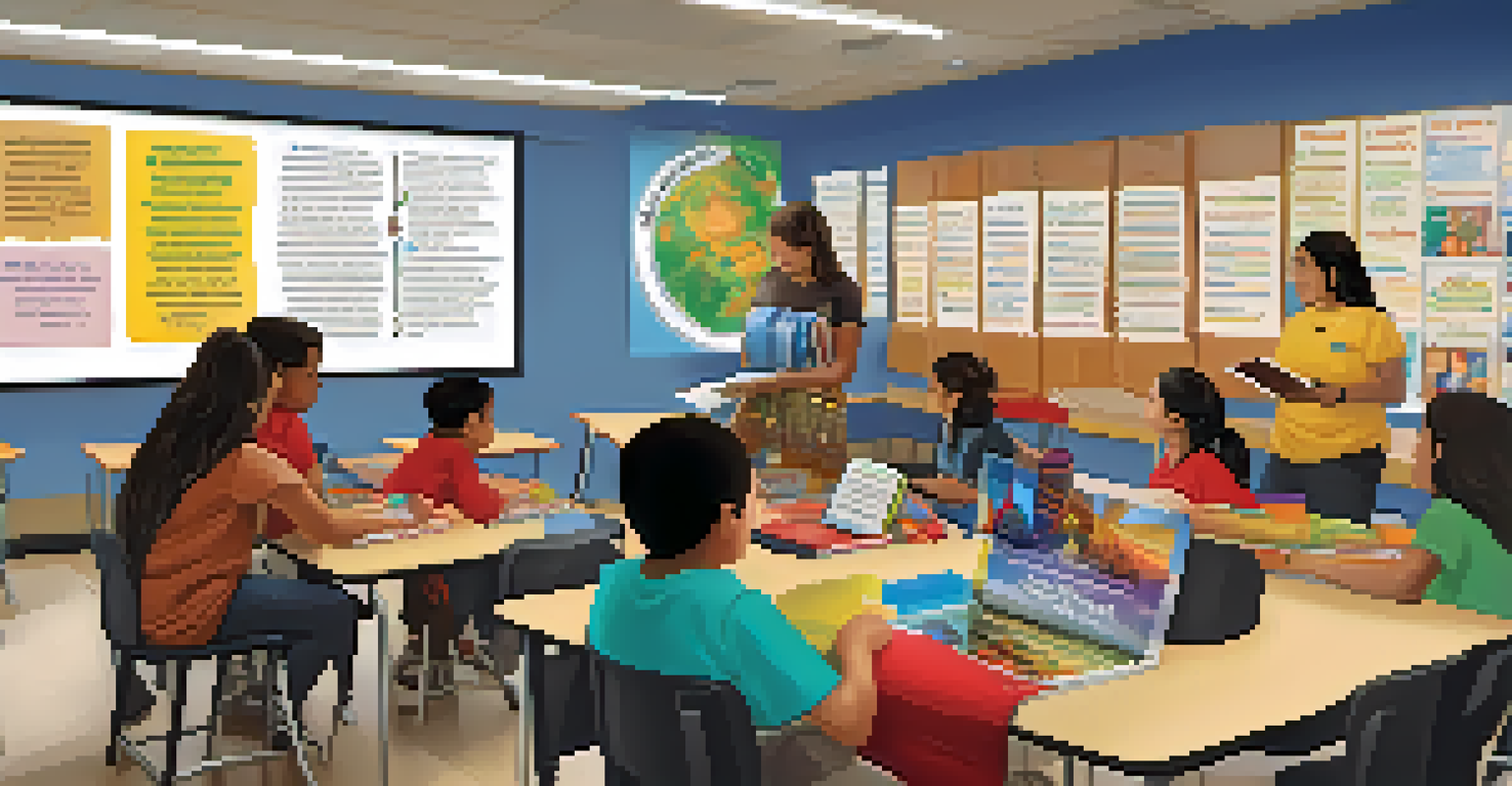Revitalization Projects for Tucson's Indigenous Languages

Understanding the Importance of Indigenous Languages
Indigenous languages are not just a means of communication; they are carriers of culture, history, and identity. In Tucson, these languages offer a glimpse into the rich traditions of the Native communities that have inhabited the area for generations. Revitalizing these languages is crucial for preserving this heritage and fostering a sense of belonging among the younger generations.
Language is the road map of a culture. It tells you where its people come from and where they are going.
When a language fades, it often takes with it the stories, beliefs, and practices that have shaped a community. This loss can create a disconnect between past and future, leading to a diminished cultural identity. By focusing on revitalization projects, Tucson aims to bridge this gap, ensuring that the wisdom of the ancestors is accessible to future generations.
Moreover, understanding and speaking an Indigenous language can enhance one’s appreciation for the intricacies of the culture it represents. Through revitalization efforts, community members can reconnect with their roots, strengthening their cultural identity and fostering pride in their heritage.
Current Revitalization Efforts in Tucson
Tucson has initiated various projects aimed at revitalizing Indigenous languages, with a particular focus on languages like O'odham and Yaqui. Local organizations, in collaboration with educational institutions, are developing language courses that cater to different age groups, ensuring accessibility for everyone. These programs often incorporate storytelling, traditional songs, and cultural practices to create an immersive learning experience.

Community workshops and events have also become a vital part of these revitalization efforts. They serve as platforms for language learners and fluent speakers to come together, share knowledge, and celebrate their culture. Such gatherings not only enhance language skills but also foster community bonds, creating a supportive environment for all participants.
Revitalizing Indigenous Languages
Efforts in Tucson focus on preserving Indigenous languages as vital carriers of culture and identity for future generations.
In addition, technology plays a significant role in these revitalization projects. Mobile applications and online resources are being developed to provide learners with tools to practice and engage with the language in their daily lives. By embracing modern technology, Tucson is making Indigenous language learning more appealing and accessible to the younger generation.
The Role of Educational Institutions
Educational institutions in Tucson are stepping up to support Indigenous language revitalization in impactful ways. Schools are integrating Indigenous language classes into their curriculums, allowing students to learn in a structured environment. This approach not only helps preserve the languages but also educates all students about the diverse cultures that enrich their community.
When we lose a language, we lose a part of our identity, our history, and the knowledge of our ancestors.
Higher education institutions are also offering programs focused on Indigenous studies, which encompass language, culture, and history. These programs attract students who are passionate about preserving their heritage and contribute to research that supports revitalization efforts. By fostering a greater understanding of Indigenous languages, educational institutions play a pivotal role in the revitalization movement.
Moreover, partnerships between schools and local Indigenous communities enhance the effectiveness of these educational efforts. Elders and fluent speakers are invited to share their knowledge and experiences, creating a more authentic learning experience. This collaboration not only strengthens the language but also ensures that cultural practices are passed down alongside linguistic skills.
Community Involvement and Engagement
Community involvement is essential for the success of Indigenous language revitalization in Tucson. Local organizations are actively engaging community members to participate in language learning initiatives, fostering a sense of ownership and pride. When individuals see themselves as part of the revival process, their motivation to learn and use their language increases significantly.
Events like language festivals, storytelling nights, and cultural workshops encourage community participation while celebrating Indigenous languages. These gatherings not only provide learning opportunities but also serve as a platform for sharing cultural traditions and stories. They create a vibrant atmosphere where language learners can practice their skills in a fun and engaging way.
Community Engagement is Key
Active participation from community members enhances the success of language revitalization initiatives through workshops and events.
Additionally, social media has become a powerful tool for community engagement. Platforms allow for the sharing of resources, success stories, and challenges faced in the revitalization journey. By connecting individuals online, Tucson’s Indigenous language advocates can inspire one another and create a supportive network that extends beyond geographical boundaries.
Challenges in Revitalization Efforts
Despite the positive strides in revitalizing Indigenous languages, challenges persist. One significant hurdle is the limited number of fluent speakers, especially among younger generations. This decline underscores the urgency of these revitalization projects, as languages thrive only when actively spoken and used in daily life.
Funding and resources can also pose challenges for these initiatives. Many revitalization projects rely on grants and donations, making them susceptible to fluctuations in financial support. Ensuring consistent funding is crucial for the sustainability of language programs and community events, which are vital for ongoing engagement.
Moreover, the integration of Indigenous languages into mainstream education can face resistance. Some may question the practicality of learning a language that is not widely spoken outside the community. Overcoming these perceptions requires a concerted effort to demonstrate the cultural and personal value of Indigenous languages, highlighting their significance in fostering identity and community cohesion.
Success Stories from Tucson's Language Projects
Amid the challenges, Tucson has witnessed inspiring success stories that showcase the impact of revitalization projects. For instance, local schools have reported increased student participation in language courses, with many students expressing a desire to connect with their heritage. This enthusiasm is a testament to the effectiveness of community-driven initiatives that resonate with young learners.
Additionally, community members have taken proactive steps to create language resources, such as dictionaries and bilingual storybooks. These materials not only aid in language learning but also ensure that cultural narratives are preserved and shared with future generations. The collaborative efforts between community members and organizations have proven to be a powerful force in revitalizing Indigenous languages.
Educational Institutions' Role
Local schools and universities are integrating Indigenous language programs into their curriculums, fostering cultural understanding and support for revitalization.
Another success story involves the establishment of language immersion programs, where participants are encouraged to communicate exclusively in their Indigenous language. These immersive experiences have led to significant improvements in language fluency and confidence among learners. By creating an environment that prioritizes language use, Tucson is making strides toward a more linguistically diverse future.
Looking Ahead: Future of Indigenous Languages in Tucson
As Tucson continues to invest in revitalization projects, the future of Indigenous languages looks promising. Ongoing efforts to enhance community engagement and educational programs are paving the way for a new generation of speakers. By prioritizing language preservation, Tucson is fostering a sense of pride and identity among Indigenous youth.
Moreover, the integration of technology will likely play a crucial role in the future of these languages. As digital resources expand, learners will have more opportunities to practice and engage with their language outside of formal settings. This accessibility is vital for maintaining interest and ensuring that these languages remain a living part of the community.

Ultimately, the journey of revitalizing Indigenous languages in Tucson is a collective effort that requires support from all community members. By working together, celebrating successes, and addressing challenges, Tucson can ensure that its Indigenous languages thrive for generations to come. The commitment to preserving these languages is not just about communication; it's about honoring the cultural heritage that shapes the community.